NEWS
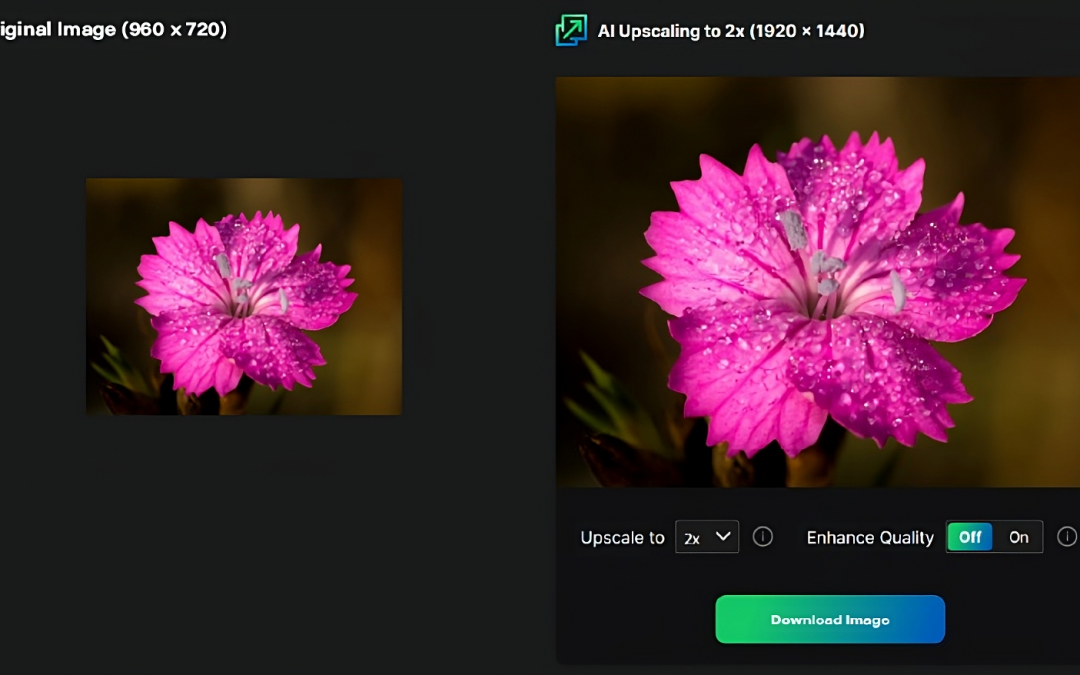
Try out this Free Image Upscaler
Here’s a great resource worth trying for graphic design, image editing, or personal use. It’s a free image upscaler that can increase the resolution of any image up to 4x the default, while maintaining the same level of detail and sharpness. Choose your image, upload it to the Upscaler, select a desired scale, and download your upscaled image in seconds. The upscaler can sharpen blurry elements in the original image with the enhanced quality option. Optional credits can be purchased to upscale images in bulk, but they are not required for single image upscaling, even when doing multiple images in sequence.
Uploaded images must be in png, jpeg, jpg, or webp formats to be upscaled. The link below is just one example of an image upscaler, and many more exist and can be found with a simple internet search.
https://www.upscale.media/upload
Design Interface Inc. can show you what is possible. Our forward-thinking solutions for product design, package design, medical device design, graphic design and photography unlock the value of your ideas as we communicate your message and goals. See more here: https://designinterface.com/
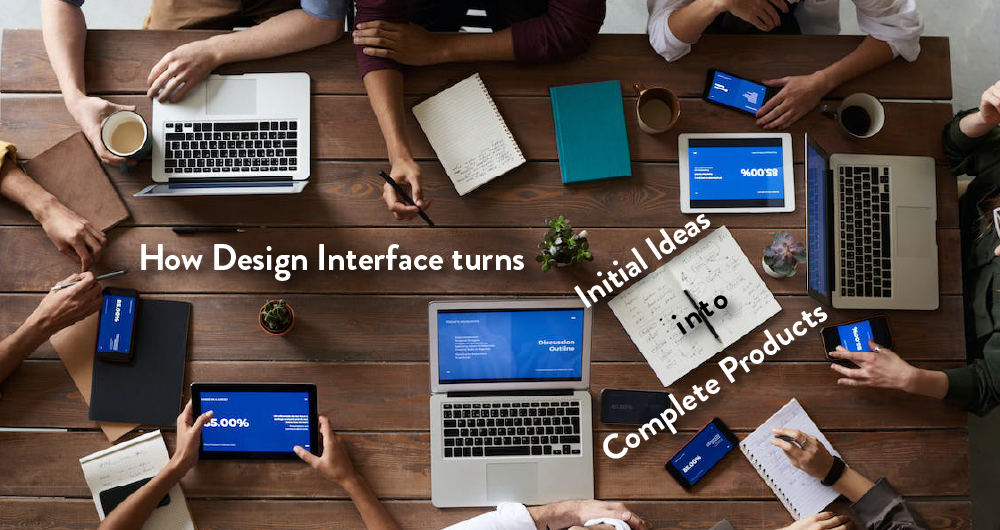
How Design Interface Inc. turns Initial Ideas into Complete Products
For almost 40 years we’ve helped hundreds of inventors, doctors, and entrepreneurs create award-winning products that improve and enhance people’s lives. No matter where you are in the development cycle, we will collaborate with you at each step of the design process to bring your idea to life. Though every product’s journey is different, here are the general steps of Design Interface’s design process:
- Ideation
The first stage for creating a new product, after researching competitive designs that already exist, is to create a series of concept sketches that explore features, colors, and methods for manufacture. It’s at this stage that we ask the big questions about the future of the product. What forms could it take? Is the product going to satisfy the problem it was created for? What other possible directions could development take? What ergonomic analysis is needed?
- Develop Solutions
Once an idea is chosen, work on 3D models begins, along with graphics, and details. Often, we create 3D digital files of a new product idea and render them or create prototypes using our array of 3D printers. The goal of this step is to join together the grand ideas of what a product can be with the methods and techniques of how it can be made.
- Prototype, Test, Repeat
When a solid concept is found, prototypes are constructed and tested for usability, manufacturability, ergonomics, and aesthetics, to ensure it satisfies all our criteria for success. Repeating this loop of prototyping, testing, and gathering user feedback is crucial for making sure the design is right — that is, it works for customers, you can build it, and you can support it.
- Finishing Touches
With a completed and satisfactory prototype, all the other documentation and design work is finished up that is necessary for the production and sale of a product. From dimensioned drawings to logos to labels and everything in between, there can often be a tremendous amount of work involved with launching any design.
- Implementation
Finally, when all the work is done, the product can, at last, be sold or implemented in whatever role best suits it. Though the process can be a tough journey, there is nothing that makes a designer prouder than seeing something that was once just a sketch on a napkin grow into something real and powerful.
Design Interface Inc. can show you what is possible. Our forward-thinking solutions for product design, package design, medical device design, graphic design and photography unlock the value of your ideas as we communicate your message and goals. See more here: https://designinterface.com/
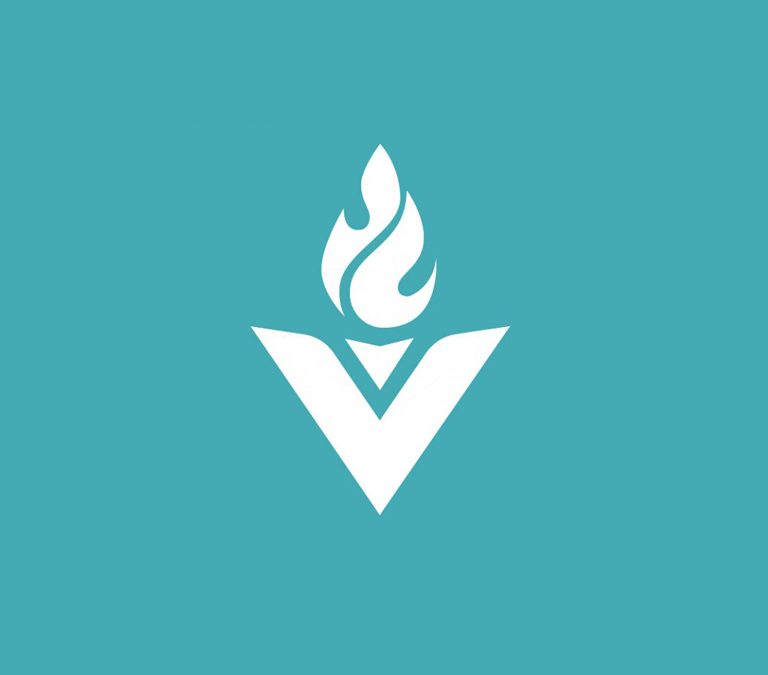
Design Interface Inc. – Now featured on DesignRush
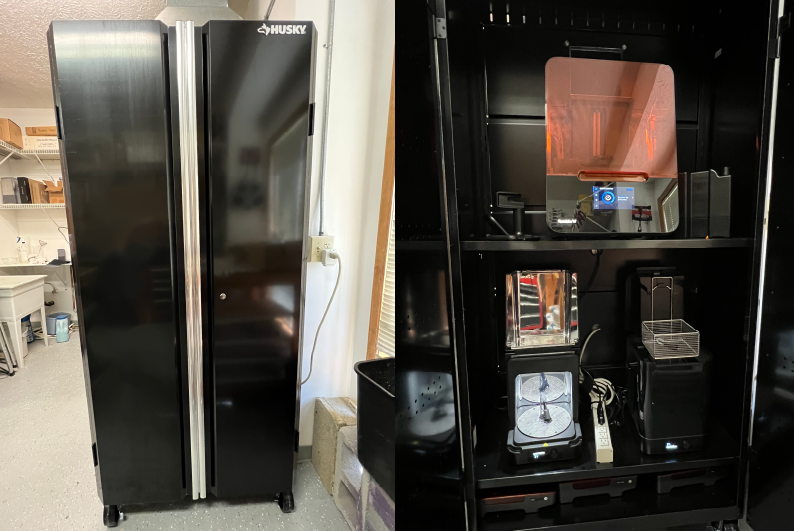
New at Design Interface Inc. – Formlabs Form3+ resin printer
Here at Design Interface, we have recently acquired a Formlabs Form 3+ resin printer for use in creating prototypes and parts for our clients. We are excited about all the potential creations we can make with the device and the Formlabs Form Wash and Form Cure that accompanied it. After setting up the printer and creating our first few test prints, we were quite happy with the results, though there was a learning process involving in the preparation of 3D modeling for printing, as the location of support materials and orientation parts plays a great deal in the success of the finished product. An issue that persisted during use was the chemical smell from the resin that filled any room the printer was placed in. To prevent any discomfort to our designers, we ordered a rolling cabinet large enough to fit all the Formlabs devices and connected it to the fume hood in our workshop to assist in ventilation and storage.
Fused Deposition Modeling or FDM 3D printing is the most common type of 3D printing technology in use today, and the one that most people think of when they hear the term. Utilizing a spool of filament that is deposited in layers, an FDM printer can be used to great effect for a tremendous number of projects, from creating figurines to professional prototyping. However, the limitations of printer resolution and materials selection have still limited the options of designers looking to create elastic materials, translucent parts, and ones with a great amount of detail. The recent innovation of Resin 3D printing, also known as Stereolithography or SLA printing has finally given designers and hobbyists the ability to create as never before.
Where resin printers excel is in their ability to produce smooth finishes free of layer-lines and blemishes that often occur with filament printers, and in the greater accuracy of the resulting part thanks to laser light that solidifies the resin into a desired shape with much greater accuracy. SLA printing is not without its downsides, however. Resin is overall more expensive than filament, and requires an alcohol wash, sometimes followed by exposure to a UV chamber to shed excess material and reach its desired toughness. In addition, resin printing is more challenging to prepare. The use of resin printing software is required to mark support locations on the part where structures can connect to a part to stabilize it as the laser creates each layer. For most FDM printing, one simply orients their part in a certain way, support materials are created automatically beneath under hangs, and the part is created. Though dissimilar in many ways, having both options available for different projects is an invaluable part of the workflow of a modern designer.
Design Interface Inc. can show you what is possible. Our forward-thinking solutions for product design, package design, medical device design, graphic design and photography unlock the value of your ideas as we communicate your message and goals. See more here: https://designinterface.com/
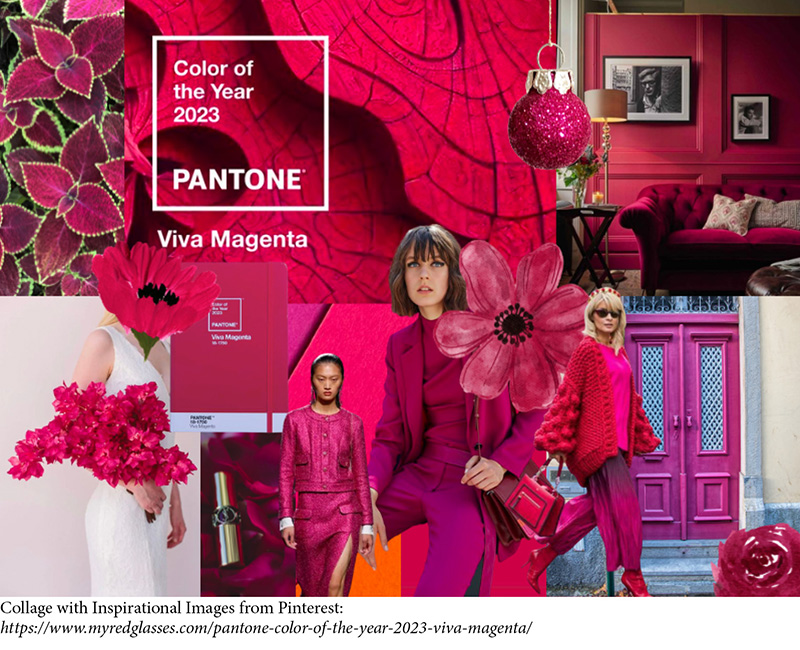
The Pantone Color of the Year 2023: Viva Magenta
The Pantone Color of the Year has become a significant event in the design world, with companies and individuals looking to incorporate the chosen shade into their products and spaces. Viva Mengenta, which Pantone explains is “vibrating with vim and vigor,” is a natural shade from the red family and demonstrates a new symbol of strength. It is a bold red tone that could drive design to create a more positive future.
The Executive Director of the Pantone Color Institute, Leatrice Eiseman, said that this shade takes its cues from nature. Viva Magenta, Esieman notes, communicates power—but in an assertive, not aggressive way. “It’s a color that really vibrates with vim and vigor, that demonstrates a new signal of strength, which is something we all need for a more optimistic future.”
Viva Magenta is perfect for adding a pop of color to any design. Some examples of places where you might encounter viva magenta include logos, brochures, posters, websites, and social media ads. It can also be found in fashion, accessories, and home decor items.
Ready to immerse yourself in 2023’s Pantone color? Here’s everything you need to know about Viva Magenta, and how to splash this year’s color of the year across your designs and creative projects. Read more: https://www.pantone.com/articles/color-of-the-year/what-is-viva-magenta

Modern Monumentality
So as humans have walked the Earth, we have etched our designs into the face of it. From cave paintings to pyramids, statues to skyscrapers, design has come far throughout the ages, and some of the greatest examples of design ever wrought by our species have traveled through the ages with us. The idea of a monument is simple: to be an icon, a symbol of something larger than ourselves. Whether to commemorate religion, nationalism, war, peace, or otherwise, the creation of great monuments has continued to progress and evolve over time even until the modern day. How is it that today’s designers seek to honor the past and look to the future through the monuments they create?
The most obvious divergence from past monuments of stone and steel is the use of modern technologies to inform and inspire, most notably integration of digital technology. In the aftermath of the 9/11 attacks, the National September 11 Memorial and Museum in New York City was designed to incorporate interactive displays and multimedia exhibits that tell the story of the tragedy in a powerful and engaging way. This approach has since been adopted by many other monuments, allowing visitors to immerse themselves in the history and culture of a place in a way that was not possible before.
Sustainability is another important consideration in modern monument design. As we become increasingly aware of the impact our actions have on the environment, designers are incorporating eco-friendly features into their projects. The Martin Luther King Jr. Memorial in Washington, D.C., for example, was built using sustainable materials and features a rainwater collection system that irrigates the surrounding landscape. This kind of sustainable design not only helps to preserve the natural environment, but also serves as a reminder of our responsibility to protect it.
Accessibility is also a key consideration in modern monument design. Monuments must be accessible to people of all ages and abilities, and designers are incorporating ramps, elevators, and tactile exhibits to ensure that everyone can experience the monument in their own way. In addition, modern monuments are often designed to celebrate the cultural diversity of the nation. Public art installations, murals, and sculptures are used to represent the contributions of different communities to the nation’s history and culture. This kind of representation is essential in creating a sense of inclusivity and belonging in our public spaces.
The design of monuments in the modern day is a reflection of our values, aspirations, and collective identity as cultures, nations, and human beings. By incorporating digital technology, sustainable practices, accessibility features, and cultural diversity, designers are creating monuments that not only honor our past, but also inspire us to build a better future.
Design Interface Inc. can show you what is possible. Our forward-thinking solutions for product design, package design, medical device design, graphic design and photography unlock the value of your ideas as we communicate your message and goals. See more here: https://designinterface.com/
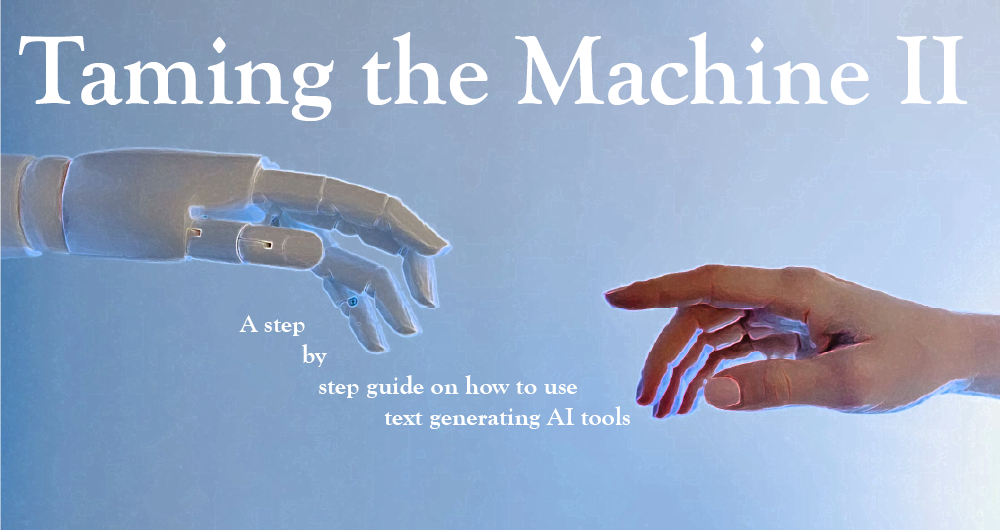
Taming the Machine II – A step-by-step guide on how to use text generating AI tools
More than just art, AI tools can be used to write text as well. From short poems to lengthy essays, and everything in between, AI is changing the way we interact with prose. Chief among the text generating AI tools is ChatGPT, a powerful tool developed by OpenAI to assist with a wide range of tasks, including answering questions, generating text, and even holding conversations. As a user, there are a few key steps you can take to ensure you get the most out of ChatGPT, accessible for free at https://chat.openai.com/chat
First, make sure you have a clear idea of what you want to achieve. Are you looking for information on a particular topic? Do you need help generating text for a project? Or are you simply interested in having a conversation with an AI chatbot? By clarifying your goals, you can better direct your interactions with ChatGPT.
Next, be specific in your requests. ChatGPT works best when given clear instructions or questions. For example, instead of asking a general question like “Tell me about the weather,” try asking something more specific like “What is the current temperature in New York City?” The more specific you can be, the more likely ChatGPT will be able to provide you with a relevant and useful response.
Another useful tip is to be patient and persistent. ChatGPT is a sophisticated system, but it may not always get things right on the first try. If you’re not satisfied with the response you receive, try rephrasing your question or providing additional context. With a bit of persistence, you can often get the information you need.
Finally, be mindful of the limitations of ChatGPT. While it’s a powerful tool, it’s not perfect, and there may be times when it’s unable to provide a useful response. If you’re working on a project that requires a high degree of accuracy or precision, it may be necessary to supplement your interactions with ChatGPT with other research or tools.
In summary, using ChatGPT effectively requires clarity, specificity, patience, and a willingness to recognize its limitations. By keeping these tips in mind, you can make the most of this powerful tool and leverage its capabilities to achieve your goals.
(This article was written entirely using ChatGPT, with minimal editing)
Design Interface Inc. can show you what is possible. Our forward-thinking solutions for product design, package design, medical device design, graphic design and photography unlock the value of your ideas as we communicate your message and goals. See more here: https://designinterface.com/

Taming the Machine – A step-by-step guide on how to use image generating AI tools
The time has finally come, and our AI overlords have arrived. Between creating wild new pieces of art, writing entire essays from simple prompts, or even beginning to generate their own code, generative AI’s have taken over the discussion of future technologies in recent times. For most, the AI takeover is viewed with either a futuristic wonder or a justified concern for what changes these technologies might bring to our very idea of work itself. There are few, however, who understand how to take the reins of these AI tools and make use of them to lighten their workload, create incredible works of imagination (both human and artificial), and so much more. To the uninitiated, here are some simple steps on how to get started with image generating AI tools:
- Firstly, you’ll want to figure out which image AI you’d like to use. There are paid options such as DALL-E 2 or Midjourney, which can be used for a time before paying for generation credits, or open-source programs such as Stable Diffusion, which requires a bit of set-up but are free to use. For the former options, joining the waitlists for access (DALL-E 2) (Midjourney) is the first step. If selected, you’ll gain access to the programs and a tutorial on how to operate them. For the latter, an easy-to-use Stable Diffusion interface is available online at the AUTOMATIC1111 github repository. The site contains information on how to install and get set-up.
- Once you’ve be selected for access or have installed the necessary programs, you’re ready to get started! All image AIs begin with a fundamental input: the prompt. Prompt engineering is a field unto itself, and there are many excellent guides available on the internet, but here are some easy pointers to get you started:
- Basic formatting: Terms in a prompt a divided by commas and can have different meanings if combined or separated.
- Ex.) ‘A cyberpunk portrait of a neon robot dog’ vs ‘A portrait of a dog, cyberpunk, neon color scheme’
- Base: Defining what medium your image will attempt to imitate.
- Ex.) ‘A Portrait of . . .’, ‘A 3D-rendering of . . .’
- Descriptors: A few guiding words that will guide the style of the piece.
- Ex.) ‘Cyberpunk’, ‘Brutalist’
- Things: The nouns, or main objects of focus
- Ex.) ‘A skyscraper’, ‘Two dogs’
- Environment: The physical surroundings or lighting conditions
- Ex.) ‘. . . in a vast open field’, ‘. . . at dusk’
- Influences: The name of a style or artist that the piece can imitate
- Ex.) ‘. . . by Rembrandt’, ‘. . . in the style of Picasso’
- Additional prompts: Some keywords can aide in improving the quality of generations, without describing the piece itself
- Ex.) ‘artstation’ draws on the vast library of artwork available on that platform to add coherency, ‘in focus’ or ‘centered’ can help draw the focus of the image to your subject, and ‘highly detailed’ will reduce blurry areas.
- Negative Prompts: Some programs such as Stable Diffusion allow for the input of negative prompts as well to help guide your generation, such as inputting ‘blurry’ to help increase the fidelity of the output, but this effect can also be achieved by using a negative sign in the positive prompt, such as ‘-blurry.’
- Emphasis: Keywords in the prompt can be emphasized to add more focus to them in the generation by use of () or :X to increase the emphasis or [] and :-X to reduce it
- Ex.) ‘A (cubist) portrait of a dog, detailed:2, blurry:-1, [cat]’

- Ex.) ‘A (cubist) portrait of a dog, detailed:2, blurry:-1, [cat]’
- Next, adjust the output resolution (if available) to your desired size. Some image AIs can stretch or duplicate the subject of your prompt if the image size is set to an extreme, so it’s a good idea to adjust your prompt if the resolution is extreme, such as including ‘a panorama of a mountain range’ for a very wide image instead of just ‘a picture of a mountain.’
- Decide on the number of images you want to generate at once. When starting a new project, it can be a good idea to set your batch number lower so that you can alter and play with your prompt and settings, before increasing it to get a range of good final images to choose from.
- Change the sampler / model. Some image AIs allow for the download of different models from sites such as AI which are trained and specialized to create different styles or subjects. The sampler on the other hand is the algorithm with which the image AI creates the output. Samplers can vary in levels of detail or prompt recognition, though the most advanced samplers are usually selected by default.
- Adjust your sampling steps based on the desired level of detail. The higher the sampling steps, the more the image AI will go over the base noise that it starts with to add more detail to the image. A good standard range to work in is 20-50, though increasing this number will also increase the time to generate a result. Going too high or too lower will produce images that are overdetailed or underdetailed respectively.
- Finally, alter the CFG scale, if available. This is a measure of how closely the image AI will stick to your prompt. Reduce the number and you’ll get more creative (and potentially nonsensical) results. Increase it and you might get exactly what you asked for, but sometimes the result is a bit too literal. An average number of 7-8 should allow for a good blend of prompting and AI creativity.
- Hit generate and check out your result! Few attempts create the perfect image on the first or even tenth try, as a fair amount of effort is needed to refine your prompt, change the settings, and maybe touch up the final result in a drawing software. This process can often be enlightening however, as you discover new and interesting interpretations of what you set your prompt for, potentially creating something even beyond your imaginations.
- Basic formatting: Terms in a prompt a divided by commas and can have different meanings if combined or separated.
This is by no means all that image AIs can do, many have the ability to inpaint and outpaint, allowing the user to ‘expand’ an existing image to paint beyond its boundaries, or erase sections of an image and generate entirely new details, such as erasing an outfit and generating a new one. Another powerful function is img2img, which allows the use of an existing image as a base onto which to generate a new one. This function includes a ‘denoising strength’ slider, which affects how much the original image will be altered. For example, using a base image of a landscape and prompting ‘cartoon style’ can make the resulting image more or less comical depending on the denoising value, from completely identical to radically different. Finally, image upscalers can be used to increase the size of your outputs, especially useful as generation a high resolution image can take significant time and processing power. Upscalers use AI to ‘fill in’ an image as it gets larger so that no quality is lost, or pixels are stretched.
New AI tools are being developed at a rapid pace, and many of the tips in this post may soon become out-of-date. The world of AI is wonderful and rapidly evolving, but it can also be very fun, and allow works of creativity to be created by all. Give it a try and see what you can create!
Design Interface Inc. can show you what is possible. Our forward-thinking solutions for product design, package design, medical device design, graphic design and photography unlock the value of your ideas as we communicate your message and goals. See more here: https://designinterface.com/
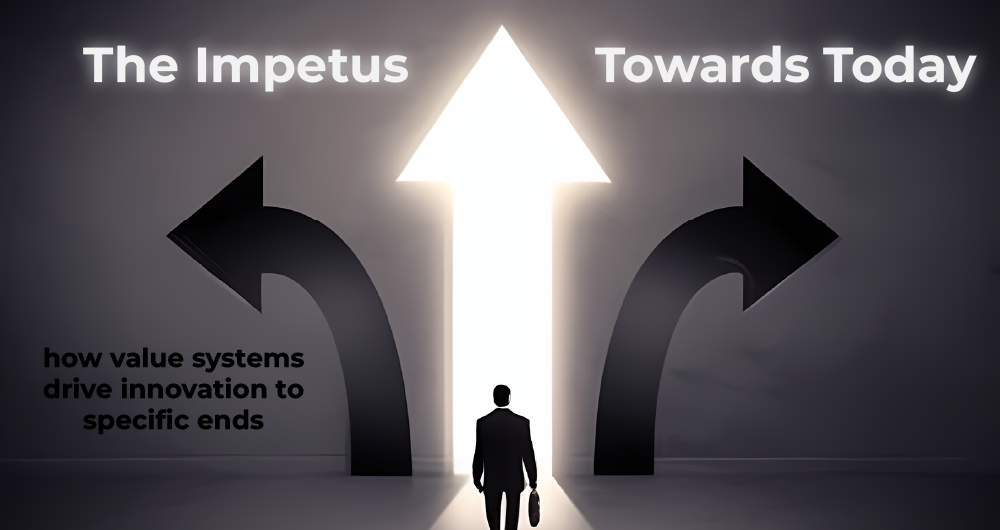
The Impetus towards Today: How value systems drive innovation to specific ends
There is a tendency with the idea of history that, looking back, we assume things have occurred just as they were always going to. Academics talk about climbing technological ladders and the natural development of ideas and breakthroughs, one after the other. This concept pervades every area of our culture, from games featuring ‘technology trees’ to science-fiction forecasting the wild world of tomorrow as being largely like the world of today, just with a bit more spaceships and chrome. This concept, a sort of technological determinism is borne from a view of technological development as a thing wholly uninfluenced by trends, power, or designs, and serves as a confirmation bias of sorts for the world as it is. Not only does this idea impede our understanding of how technology has changed and continues to do so, but it also stymies innovation and concentrates the flow of progress towards ends that best suit those who hold power in our society.
What conclusions can be drawn from the fact that the focus of technological progress in the fields of telecommunications, data storage, and information transfer has leaped above and beyond that of many other fields? That the demand for economists and students of corporate law is unending, while other job categories stagnate or face poor working conditions and worse salaries? The answer is plain to see: if a significant portion of power and wealth are concentrated in the hands of the very few, then the forces of ‘the market’ and ‘technological incentives’ will work towards their specific ends. We may not have space travel, free health care, or universal housing, but we do have cellphones, Zoom calls, and bitcoin. The financialization of technology and design is nothing new, but the degree to which it has seized control over almost all factors of product is something unique to our current era. Risky venture capital schemes and faux-futurist projects can raise billions towards the development of financial software or app-based recreations of existing public services, while vital efforts towards improvements in renewable energies, education, quality-of-life, and more struggle to gain funding. This disparity is not because one effort is more meritorious than the other, but rather because endeavors that serve the ends of power tend to be more successful than ones that don’t. In this way, technology develops most easily along the paths of least resistance, avenues carved by the powerful on their rise to prominence.
The things a society creates reflects its nature. Be it art, design, technology, or otherwise, nothing comes into being devoid of context. A different society from our own would doubtlessly develop different technologies and enjoy different things. The clarity knowledge brings is the ability to recognize the forces at play that influence our lives and the objects and technologies with which we interact. By acknowledging things as a product of an artificial environment, one created by the powerful, we can demystify their origins, and seek to build a better world within the body of the old one.
Design Interface Inc. can show you what is possible. Our forward-thinking solutions for product design, package design, medical device design, graphic design and photography unlock the value of your ideas as we communicate your message and goals. See more here: https://designinterface.com/

Fantasy to Fact: How ideas in fiction have become designs in reality
Inspiration can come from anywhere, be it the wonder of nature, or from within the pages of a book. Throughout history, many a story of epic fantasy or remarkable science-fiction have given birth to fantastical new ideas of technologies and designs far beyond the reach of their day, only to be given life decades or centuries afterward. More than a few of the most revolutionary designs and inventions that shape the world today can trace their first steps from stories and tales, some drawing inspiration from fiction, while others are created in their spitting image. The why of this phenomenon is obvious; who wouldn’t want to live out their fantasies? The how, on the other hand, is much more complicated.
Even before the widespread adoption of the printing press and the spread of common literacy, stories and invention have been intertwined since antiquity. It was Prometheus who gave the gift of fire, and Spock who gave the gift of the cellphone. Some of the first major inventions of the modern age that can trace their works to the writings of the first famous authors are the submarine and the helicopter, both inspired by the works of Jules Verne; ‘Twenty Thousand Leagues Under the Sea’ and ‘Clipper of the Clouds’, respectively. Verne, living to see his fantastical ideas made into reality is famously quoted as saying “Anything that one man can imagine, another man can make real.” This observation would prove prophetic over the course of the following century, with many notable inventions such as the Rocket, Atomic Power, the Cellphone, and many more leaping from the imaginations of futurists and into the everyday.
Of specific note is the previously alluded-to Star Trek, which has given rise to an impressive number of innovations that have found common use. Why one science-fiction show, or any other of the myriad muses of fiction have driven brilliant designers, engineers, and innovators to create the impossible becomes obvious once one considers the root of science-fiction and other stories of the plausibly fantastical. Written by authors whose imaginations are just barely limited by the technologies and ideas of their time, extrapolating what they know into the world-to-be, stories are a fantastic breeding ground for ideas and direction for future research. Naturally, as time moves on and technology progresses, the once-impossible suddenly becomes probable, and so stories of the future become self-fulfilling prophecies.
In all things, inspiration can drive us forwards. To the impossible dream. To the barely imaginable utopia. And then, in time, we arrive. Perhaps not exactly as imagined, or perhaps exactly because it was imagined.
Design Interface Inc. can show you what is possible. Our forward-thinking solutions for product design, package design, medical device design, graphic design and photography unlock the value of your ideas as we communicate your message and goals. See more here: https://designinterface.com/


